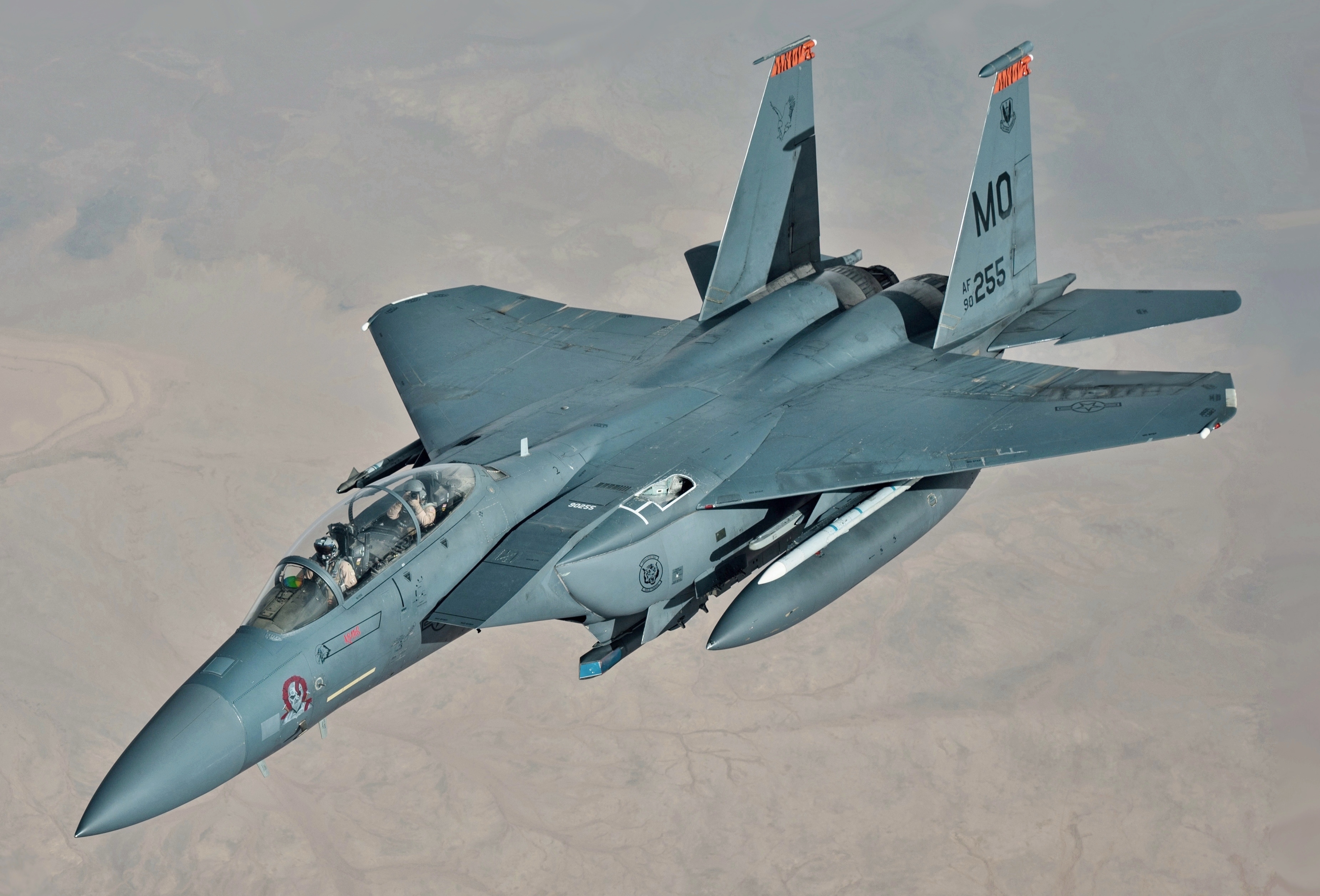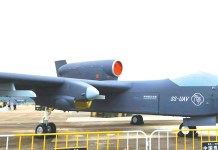The US Air Force (USAF) has carried out operational tests of the latest F-15EX fighter jets. The Boeing F-15EX Eagle II is slated to replace the aging F-15C/D variants.
China’s Development Of Powerful Directed Energy Weapons (DEWs) Triggering A Global ‘Laser War’?
So far, the Air Force has inducted two F-15EX jets, which flew alongside F-15Cs and F-15Es (Strike Eagles) during the evaluation exercise, the Air Force said in a statement. The F-15 platform has proved its reliability since its induction in 1974. The aircraft platform has since gone through several rounds of technological evolutions.
Despite various changes and upgrades, the F-15 has remained unchallenged in aerial combat with many battlefield victories to its credit. Newer variants come with far more resilient airframes, sophisticated processors, and advanced flight control systems. The latest F-15EX comes equipped with an advanced radar among other components exclusive to USAF.
The F-15EX is a next-generation fighter aircraft and is the latest iteration of the F-15 Eagle Mission Design Series. The bird took its first flight in February earlier this year. The F-15EX with a Maximum Take-Off Weight (MTOW) OF 37,000 kilograms can cruise at Mach 2.5 speeds.

Industry insiders believe that about 30% of the F-15EX would be unique to the US Armed Forces.
Boeing has also offered the F-15EX fighter jet to India. Amid threats from China and Pakistan, India needs its modern fighters to have substantial fuel tanks to fly for longer hours, so that they did not have to return to their base for refueling.
Sanctioning India For S-400 Missile Defense System Purchase Will Further Push New Delhi Towards Russia – US Senators
The F-15EX fulfills this requirement; it is also capable of striking deep into the territories of western neighbors such as Pakistan, The EurAsian Times reported earlier.
Evaluations To Continue
USAF concluded its weeklong operational evaluations of its two F-15EX Eagle II fighter jets. The F-15EX is an upgraded variant of the fourth-generation F-15 fighters.
The F-15EXs underwent their maiden tests at the Nellis Air Force base in Nevada from October 18 to October 25. These F-15 EXs flew alongside F-15Cs and F-15Es for the purposes of a comparative evaluation.
USAF test pilot Major Kevin Hands said that the tests highlighted the differences between the new variant with its predecessors. The new ones boast a digital flight control system which makes it a fly-by-wire aircraft.
The F-15C variant uses a hydromechanical system for its flight controls. The F-15 EX’s Eagle Passive/Active Warning and Survivability System (EPAWS) was also tested.

EPAWS is next-generation electronic warfare (EW) system, which has been tested for both F-15EX and Strike Eagle variants.
The EPAWS is likely to become operational in the near future. Once fully integrated, the system is expected to give the end-user the ability to operate in non-permissive environments. The EW platform is likely to be able to “self-protect and self-jam our way through” areas where “aerial denial” is high, according to USAF.
Prior Developments
The preliminary operational evaluations for the F-15EX are being spearheaded by the Air Force Operational Test and Evaluation Center Detachment 6. The first two of these birds arrived at the Eglin Airforce base in Florida earlier this year. The first F-15EX designated as the OO1 was delivered in March while the second one arrived in April.
Lieutenant Colonel Kenneth Juhl, who is associated with the USAF test and evaluation center, said the evaluations carried out at the Nellis’s air-to-air and surface-to-air training ranges will ensure that quality data is made available in order to determine its performance.

Prior to the evaluations conducted at the Nellis Airforce base, the F-15EXs underwent developmental tests to meet the prerequisite specifications and safety standards.
In May this year, both the F-15EXs took part in the Northern Edge joint training exercise in Alaska to test how well the aircraft performs in GPS denied areas. These F-15EXs will soon head back to Eglin Airforce base to carry out developmental tests.
“We’ll be transitioning back into developmental tests for the remainder of this year and going into next year, as we continue to test the additional capability of the platform to include the additional weapon stations and additional Operational Flight Program upgrades,” said F-15EX test project manager Colton Myers.
The F-15EX jets might then be deployed in the Red Flag exercise to test its operational readiness.
F-15EX Vs Previous Variants
According to Air Force Magazine, the benefit of investing in the F-15EX is that it has a 70% commonality of parts with USAF’s existing F-15Cs and F-15Es. This will likely help maintain an “in-production” aircraft. The F-15EX would use nearly the same ground equipment, hangars, simulators, and other support gear as the F-15 Eagles.
The per-unit cost of F-15EX is close to the F-35. However, the edge lies in the ease of transition. This means the existing F-15 squadrons could transition to the F-15EX variant within weeks.

While the F-15EX is a fourth-generation aircraft, the fighter lacks low observable technology (stealth) and sensor fusion, both of which the F-35s offer. This effectively implies that the F-15EX may not be able to hold its own against modern air defenses for long.
It is unlikely the F-15EX would be able to operate in proximity of non-permissive airspaces before 2028. Until then, it may be deployed for homeland and air base defense. It may also be used for maintaining no-fly zones in environments, which lack significant air defense threats.
Prior to the induction of F-15EX, Boeing had floated several upgrade plans. For instance, in 2009, the aerospace giant had proposed the F-15 ‘Silent Eagle’, a stealth version of the F-15 with an option for internal payloads, canted vertical fins and surface treatments to reduce its radar signature.
Then in 2018, Boeing had chalked out another concept in the form of the ‘Advanced’ F-15, followed by F-15 2040C. That jet would have had a substantially increased payload and advanced avionics.
The F-15EX does not need significant R&D. The test program would comparatively be seamless and require minimal additional development. USAF’s top brass believes that a potential mission for the F-15EX would be carrying “outsize” munitions, like hypersonic missiles.
The F-15EX may also see itself deployed as a possible standoff weapons magazine in conjunction with the F-22 Raptor. Further evaluations will give a clearer indication of what performance differences the F-15EX would boast over its predecessors. What has been indicated is that it would bring the same operational reliability and exceed it in order to meet 21st-century challenges.
- Aritra Banerjee is a defense journalist who has worked in both online and print media. He has laid an emphasis on issues related to military human resources, tactical psychology, military-media relations, professional military education, and combat fitness. He can be reached on email: aritrareporter@gmail.com.
- Follow EurAsian Times on Google News




